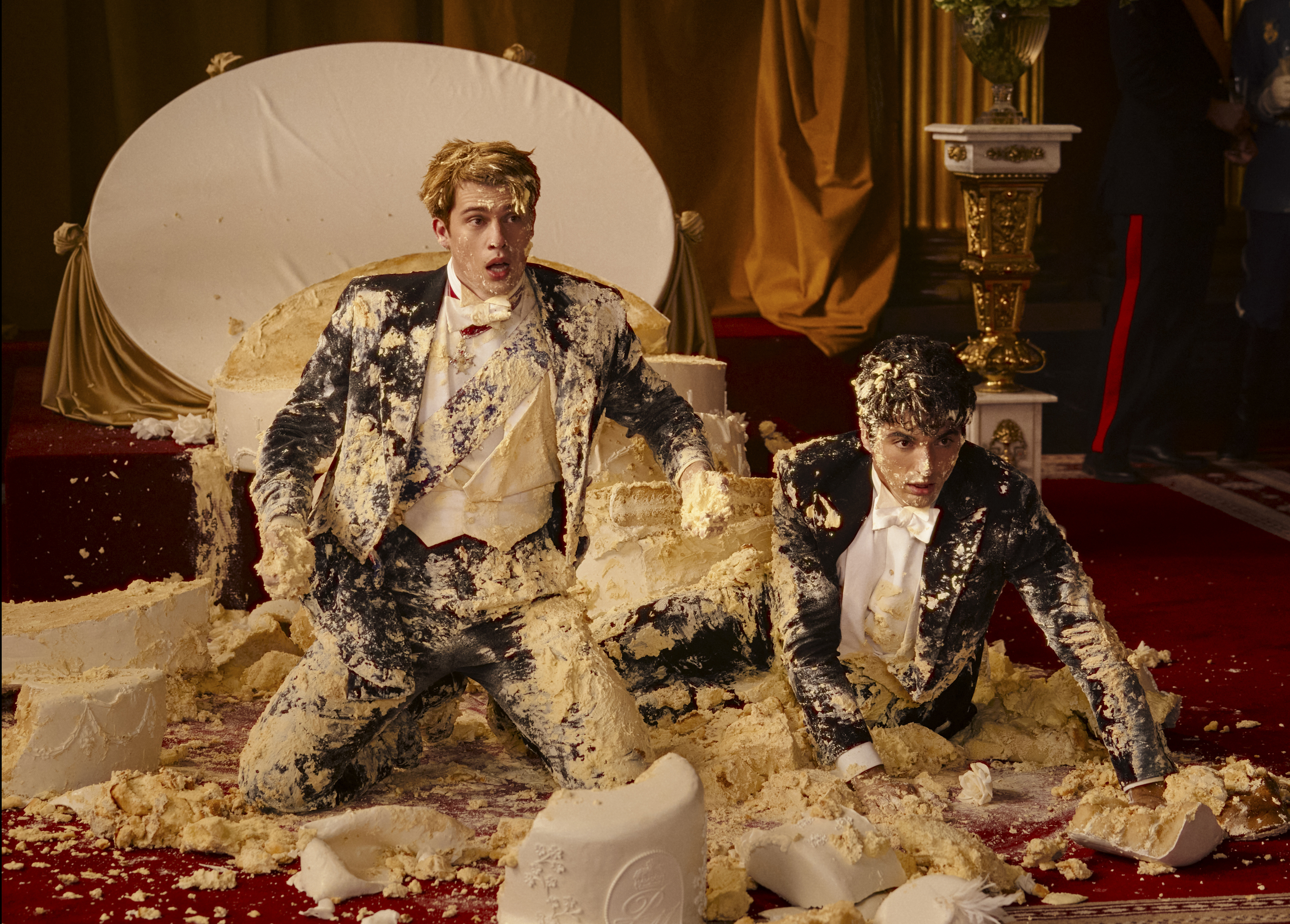Once upon a time, in a universe much like our own, the United States of America had a female President. And that female President had a son. His name was Alex Claremont-Diaz, and he had a plan to help his mom flip Texas blue. Then he met Henry, a literal British prince. It was mutual rancor at first sight; down-to-earth Alex thought Henry a snob, and haughty Henry thought Alex an ill-mannered commoner. This antipathy escalated into an international incident at the royal wedding of Henry’s older brother, which climaxed in a giant cake toppling and burying them under layers of fluffy icing.
Fast-forward through a handful of publicity stunts designed to sell the public on their friendship, and the two young men are hopelessly, hornily in love. But neither is openly queer. “Prince Henry belongs to Britain,” Henry explains.
If you’re worried this is all destined to end in heartbreak (and geopolitical catastrophe) then you probably aren’t familiar with Casey McQuiston, who dreamed up the scenario in their hit 2019 novel Red, White, and Royal Blue. Now back on bestseller lists in anticipation of a frothy new adaptation, debuting Aug. 11 on Prime Video, Royal Blue is emblematic of a new generation of love story that has conquered pop culture. I call it wholesome romance.
Decorated with cute illustrations of adorable couples, wholesome-romance covers leap out from bookstore displays in gummy-candy hues. Whether shelved as contemporary romance, YA, or new adult (coming-of-age stories about people in their 20s), these buoyant books take place in more idyllic versions of our reality, full of gentle humor and blessed with happy endings. The stakes are low, the people kind, the sex scenes PG-13 or vanilla. And the books—like Heartstopper (based on Alice Oseman’s comic), which just dropped its second season on Netflix; and Amazon’s The Summer I Turned Pretty, whose author Jenny Han’s YA romances have fueled three movies and two TV series since 2018—are getting snapped up by Hollywood. The sensibility has breached the romance-novel-to-rom-com pipeline and spilled over into literary fiction, reality TV, podcasts.
Unassuming as they may be, the titles represent a dramatic shift in the fantasy lives of their mostly female audience. The multiplatform romance (and adjacent) juggernauts of the recent past, from Twilight and The Fault in Our Stars to Fifty Shades of Grey, seduced fans with bloodsucking dreamboats, BDSM billionaires, and terminally ill teens. Now, when we immerse ourselves in a love story, fewer of us seem to seek that frisson of danger. What has become more exotic, and thus more desirable, is comfort, safety, stability. That our collective daydreams now seem so healthy and achievable is not necessarily a sign of progress.
Nicholas Galitzine as Prince Henry and Taylor Zakhar Perez as Alex Claremont-Diaz in Red, White & Royal Blue
Jonathan Prime—Prime Video
No story epitomizes this new sensibility like Beach Read, the breakthrough novel by erstwhile YA author Emily Henry. Published two months into COVID lockdown, in May 2020, the book hinges on the classic rom-com trope enemies to lovers. After the sudden death of her father and a breakup with her boyfriend of many years, romance writer January Andrews moves into the secret beach house that her seemingly perfect dad used to conduct an affair. She’s got all summer to deliver a new manuscript but can no longer bear to write happily-ever-after love stories. Then she realizes her next door neighbor is an old college rival who has grown up to be an acclaimed literary novelist. They fall in love, brought together by the challenge to swap genres for the summer.
Beach Read—like Henry’s subsequent novels, including 2023’s Happy Place, now in its fourth month on bestseller lists—has all the elements of a comforting romance. The characters are normal humans, albeit attractive ones with glamorous careers, who have familiar problems. (For further reading: Hannah Grace’s recent hit Icebreaker, which stars an Olympic figure skating hopeful and the captain of her college’s hockey team.) The reader-surrogate female narrator is independent and outspoken. (The female protagonists of queer romances also tend to be firecrackers, as in McQuiston’s 2022 YA novel I Kissed Shara Wheeler.) The setting, a Michigan beach town, is beautiful but not ostentatious. (See also: the family-owned California winery of Jasmine Guillory’s Drunk on Love.) The ratio of witty banter to explicit lovemaking is high. (Like Henry and McQuiston, many of the authors straddle the YA and adult romance worlds.)
Read more: The 10 Best TV Rom-Coms of the Streaming Era
Henry and many of her peers play to their audience by writing the stories they treasure into the book. (There’s a whole subgenre of romance novels about people who love to read and write, including Henry’s Book Lovers.) Like Laura Jean in Han’s To All the Boys I’ve Loved Before, January was a romance reader first; she discovered the genre when she picked up a paperback in the waiting room of her cancer-stricken mom’s radiologist. “It was the first wave of relief I’d felt in weeks, and from there, I binge-read every romance novel I could get my hands on,” she recalls. “Mom’s first diagnosis taught me that love was an escape rope, “but it was her second diagnosis that taught me love could be a life vest when you were drowning.”
That life raft is a booming business. After a lockdown bump, and as the genre continues to trend in the corner of TikTok known as BookTok, Publisher’s Weekly reported a precipitous 52.4% increase in romance book sales in 2022. This summer, along with Happy Place and Icebreaker, romances by Ali Hazelwood, Ann Napolitano, Taylor Jenkins Reid, and publishing powerhouse Colleen Hoover dominate bestseller lists. A new streaming adaptation of a wholesome romance seems to pop up weekly, from Netflix’s take on Katherine Center’s novel Happiness for Beginners, whose premise is more or less Wild as a rom-com, to Paramount+’s Love in Taipei, a breezy new adult romance based on Abigail Hing Wen’s YA novel.
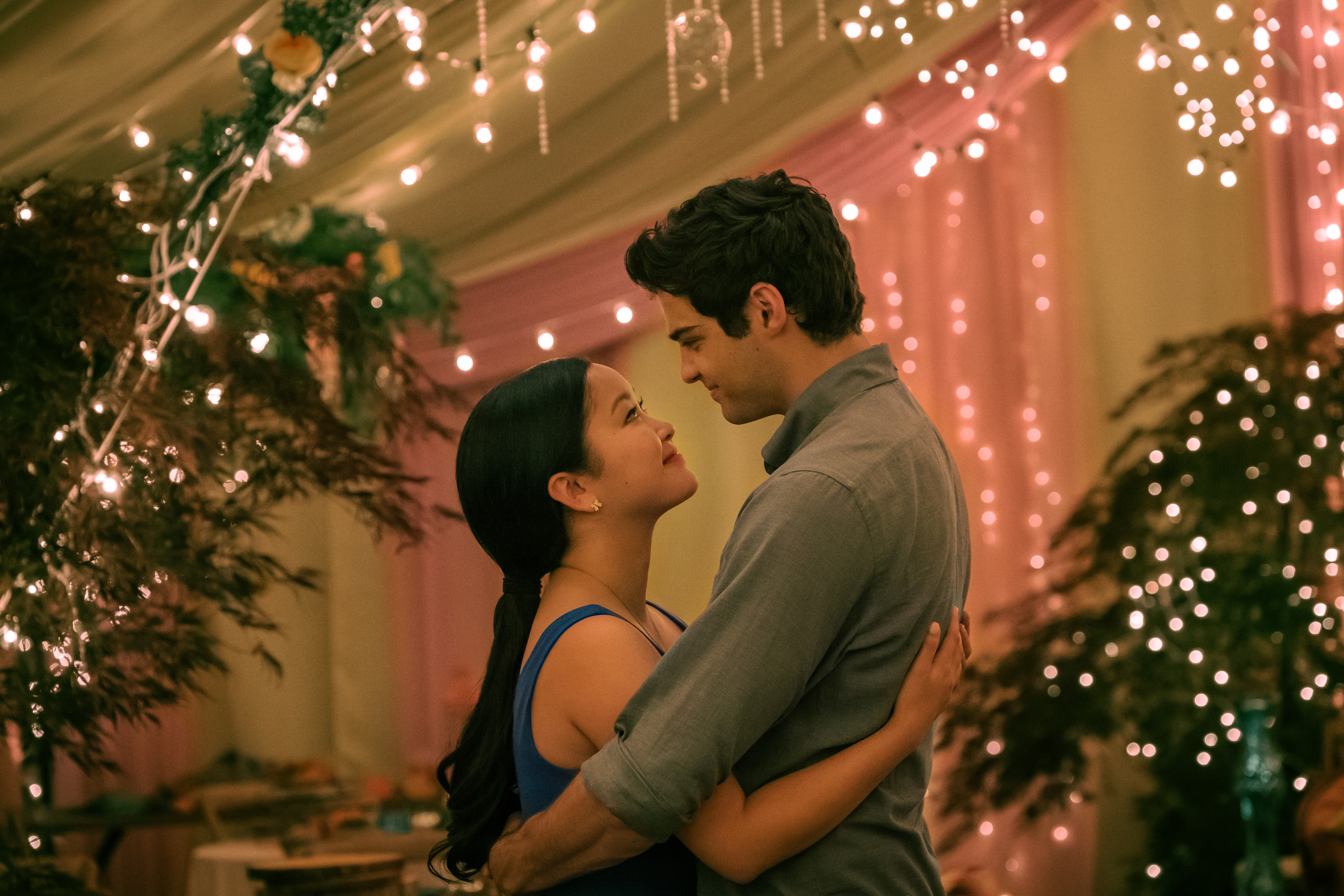
Lana Condor and Noah Centineo in To All the Boys: Always and Forever
Katie Yu—Netflix
But the wholesome-romance sensibility isn’t just a sales trend within an isolated publishing niche. Nor is it simply the latest incarnation of the rom-com, which both entails a more specific format and allows for more variation in tone. It’s about our society’s shifting orientation towards romance, regardless of genre. The yearning for grounded love stories about regular, well-intentioned people with relatable goals—marriage, professional achievement, maybe kids—has become evident across narrative art forms, from high-brow novels to low-brow reality TV.
Elsewhere on nonfiction TV, series like Netflix’s Dating Around, which follows regular people on a series of first dates, and Showtime’s Couples Therapy allow us to eavesdrop on various stages of real-life romance. Vicarious indulgence in the minutiae of other people’s relationships is a trendlet unto itself; Esther Perel’s hit podcast Where Should We Begin? is another option for couples-therapy voyeurism. In this year’s breakout indie romance film, Celine Song’s Past Lives, a young woman must choose between a childhood friend from Korea who might have been the love of her life and the American man she married. In the end, she makes the safe decision.
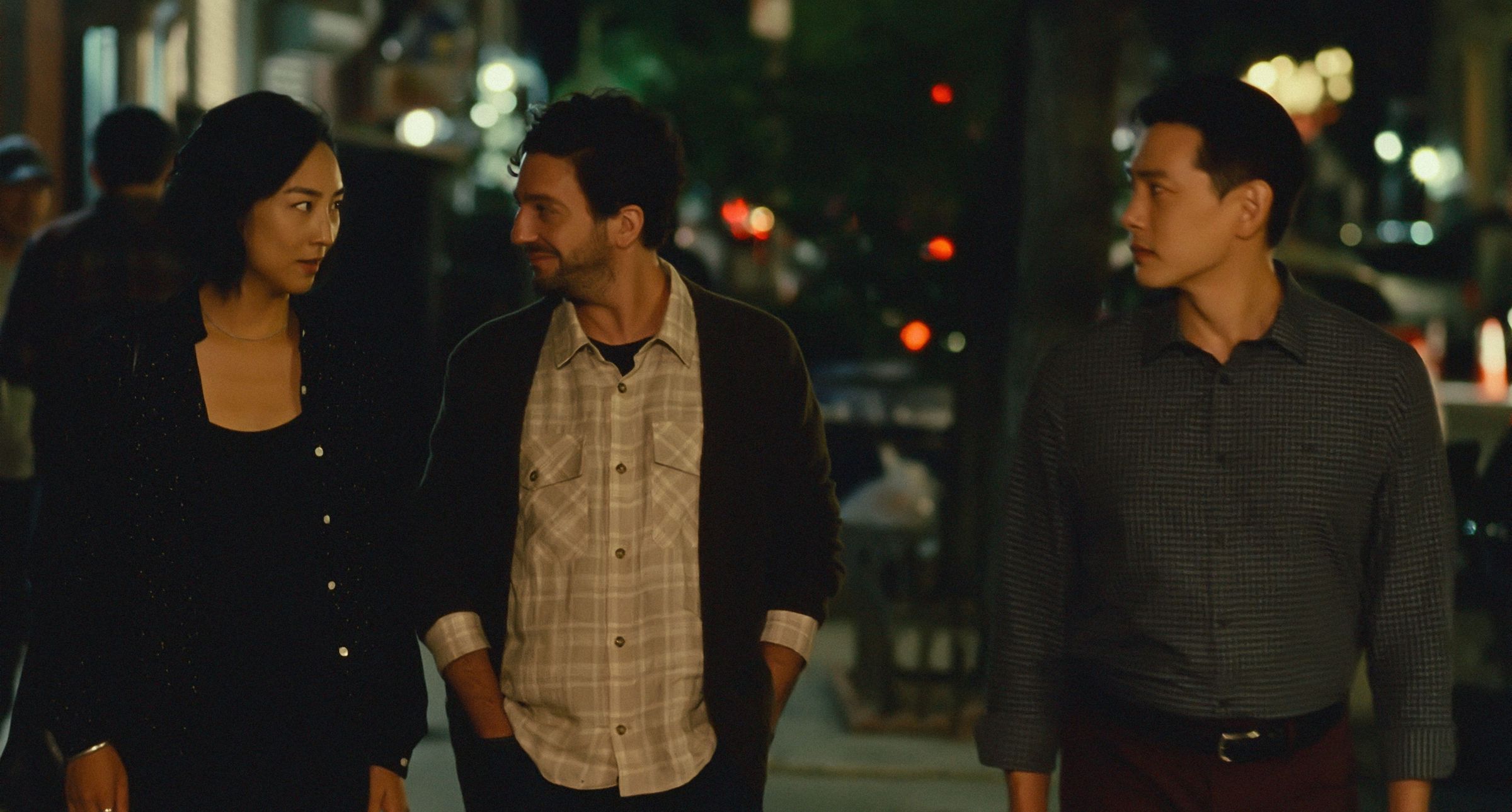
Nora (Greta Lee), Arthur (John Magaro), and Hae Sung (Teo Yoo) stroll through the East Village in Past Lives.
Courtesy of A24
Compare the Netflix smash Love Is Blind to the waning grand dame of dating shows, The Bachelor. While the latter is a glittering fairy tale of courtship, like Cinderella reenacted by a cast of influencers and models, the former throws a couple dozen millennials into isolated “pods,” where they build bonds with potential mates sight unseen. Before they can gaze deep into each other’s eyes, cast members establish compatibility by comparing values, ambitions, religious beliefs, financial circumstances, desires to procreate. Love Is Blind creator Chris Coelen has built a flourishing brand of shows premised on priming young adults—usually white-collar, middle-class professionals—for long-term partnerships: Married at First Sight, Perfect Match, The Ultimatum and spinoff The Ultimatum: Queer Love.
Some of the biggest recent literary novels have riffed on the tropes of the wholesome romance. Irish author Sally Rooney became an international sensation with books that contrast romance and friendship with the everyday misery of 21st-century capitalism—and posit love as an imperfect refuge. (Rooney’s Normal People and Conversations With Friends were swiftly adapted into Hulu miniseries.) The genre-hopping Nigerian writer Akwaeke Emezi articulates this idea in their acclaimed 2022 romance, You Made a Fool of Death With Your Beauty. “I think we’re just figuring out how to survive a world on fire… that it’s okay to be alive,” says Emezi’s heroine, Feyi. A young widow, she witnessed her husband’s car-crash death and has denied herself love and pleasure since. But Feyi is also an avatar for anyone struggling to feel truly alive at a time when COVID and war and opioids and climate crisis make us all, if we’re lucky enough to survive, witnesses to large-scale death.

Mildred Woody and Tiff Der in The Ultimatum: Queer Love.
Courtesy of Netflix
Romance, like sci-fi and fantasy, has always promised an escape from reality. But reality has rarely felt as chaotic as it has since the norm-shattering election of Donald Trump segued into a deadly pandemic, as violent backlash to the Movement for Black Lives, feminism, and LGBTQ liberation has accelerated. Romance once offered audiences—whether they were bored housewives or bored with swiping through dating apps—an escape from daily doldrums by exploiting extremes of emotion and experience in what were essentially adventure stories.
It wasn’t until the Sexual Revolution had swept through youth culture that romance novels got explicit about sexuality. The so-called bodice ripper was born in 1972, with Kathleen E. Woodiwiss’ The Flame and the Flower—which follows an 18th-century maiden who falls for the ship captain who kidnaps and ravages her. Erica Jong’s feminist sex romp Fear of Flying and Bernardo Bertolucci’s Last Tango in Paris (whose muddled notions of consent were mirrored by Bertolucci and star Marlon Brando’s alleged behavior toward the female lead, Maria Schneider) followed. Around the same time, Deep Throat took porn movies mainstream. By the Reagan ’80s and the Clinton ’90s, as economic prosperity helped cloister Middle America from the tragic fallout of epidemics like AIDS and crack, erotic thrillers from Body Heat to Cruising needled the collective subconscious about infidelity, queerness, female empowerment. The dominant romance franchises of the early 21st century, Twilight and Fifty Shades, put regular girls at the mercy of powerful men who hurt them, consensually or otherwise.
While Twilight traced its roots to the brooding romances of the Brontë sisters, wholesome romance has more in common with their predecessor Jane Austen’s light, witty novels of smart women and the difficult men who learn to love them. Which might explain why Shondaland’s Regency romance Bridgerton, based on Julia Quinn’s blockbuster books, became a phenomenon when it debuted on Netflix over the lonely pandemic holidays of 2020—and why writer-star Joel Kim Booster used Pride and Prejudice as a guide for his gay rom-com Fire Island, which made a splash on Hulu in 2022.
More than anything, though, this wholesome-romance moment reminds me of the vogue for screwball comedies in the 1930s. With the Great Depression raging, Americans scrounged pennies to watch beautiful people flirt. The sequins and nightclubs and Deco roadsters represented a lifestyle that suddenly no longer seemed attainable to the salaried masses.
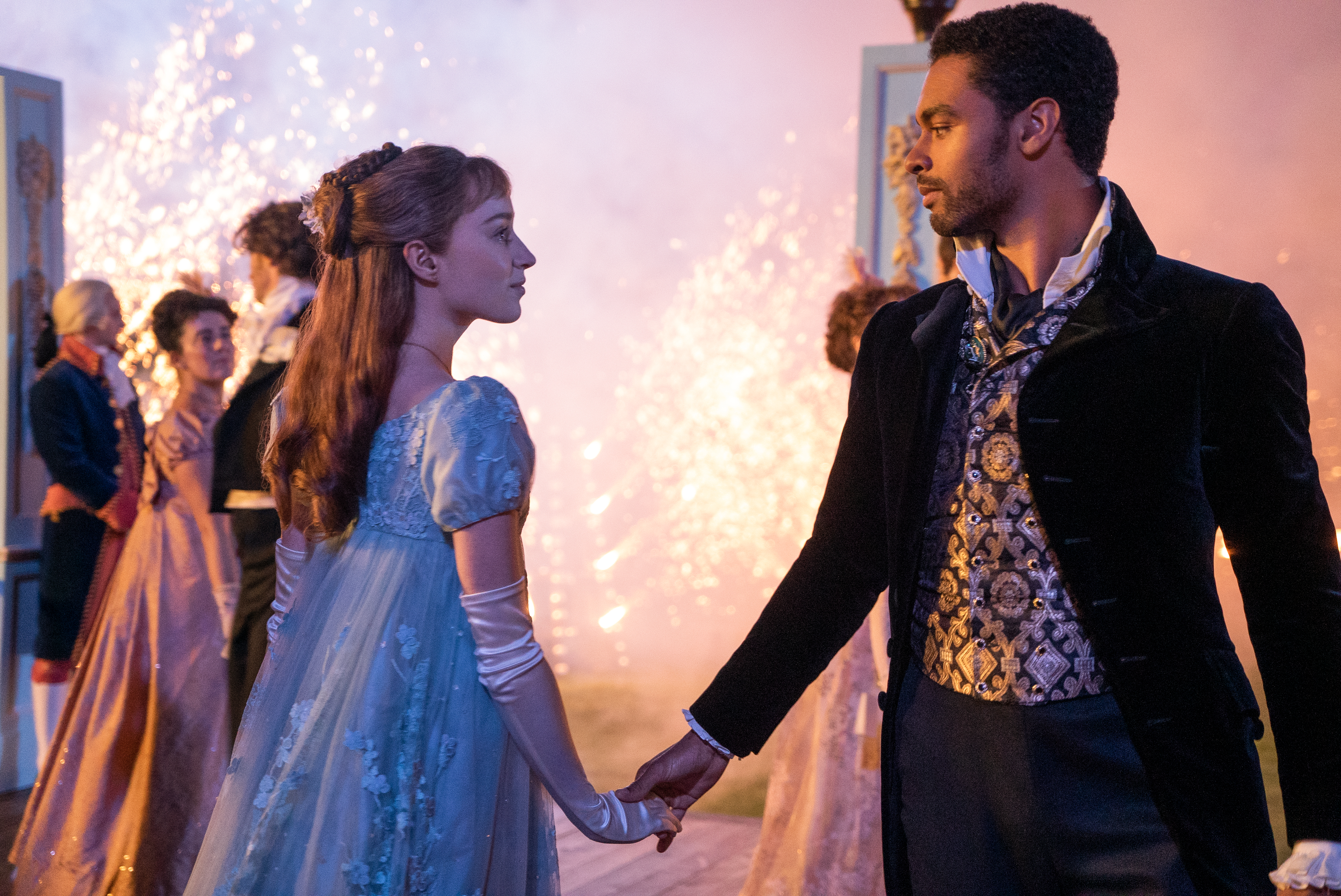
Phoebe Dynevor and Regé-Jean Page in Bridgerton
Liam Daniel/Netflix
The characters in Netflix’s breathless adaptation of Heartstopper are teenagers, but when it comes to emotional intelligence, they are wise beyond their years. At the center of the show’s whirlwind of LGBTQ first love are the openly gay Charlie (Joe Locke) and his crush turned boyfriend Nick (Kit Connor), a rugby star who spends much of the new season slowly coming out. One night, Nick apologizes for failing to tell his friends he’s bisexual at a party when he’d promised Charlie he would do so. Charlie’s response is remarkably mature. “I think there’s this idea that when you’re not straight, you have to tell all your friends and family immediately—like you owe it to them. But you don’t,” he says. “I want you to come out when and how you want to. And if that takes a long time, that’s completely OK.”
It sounds like the kind of thing a person who had been through therapy would say. But this sort of talk is a lingua franca for the sensitive teens and young adults who populate wholesome romances. Sometimes they are literally in therapy. More often, they drop pop-psychology buzzwords like processing—a term that accurately describes the frequent heart-to-hearts in which the lovers share the experiences that made them who they are.
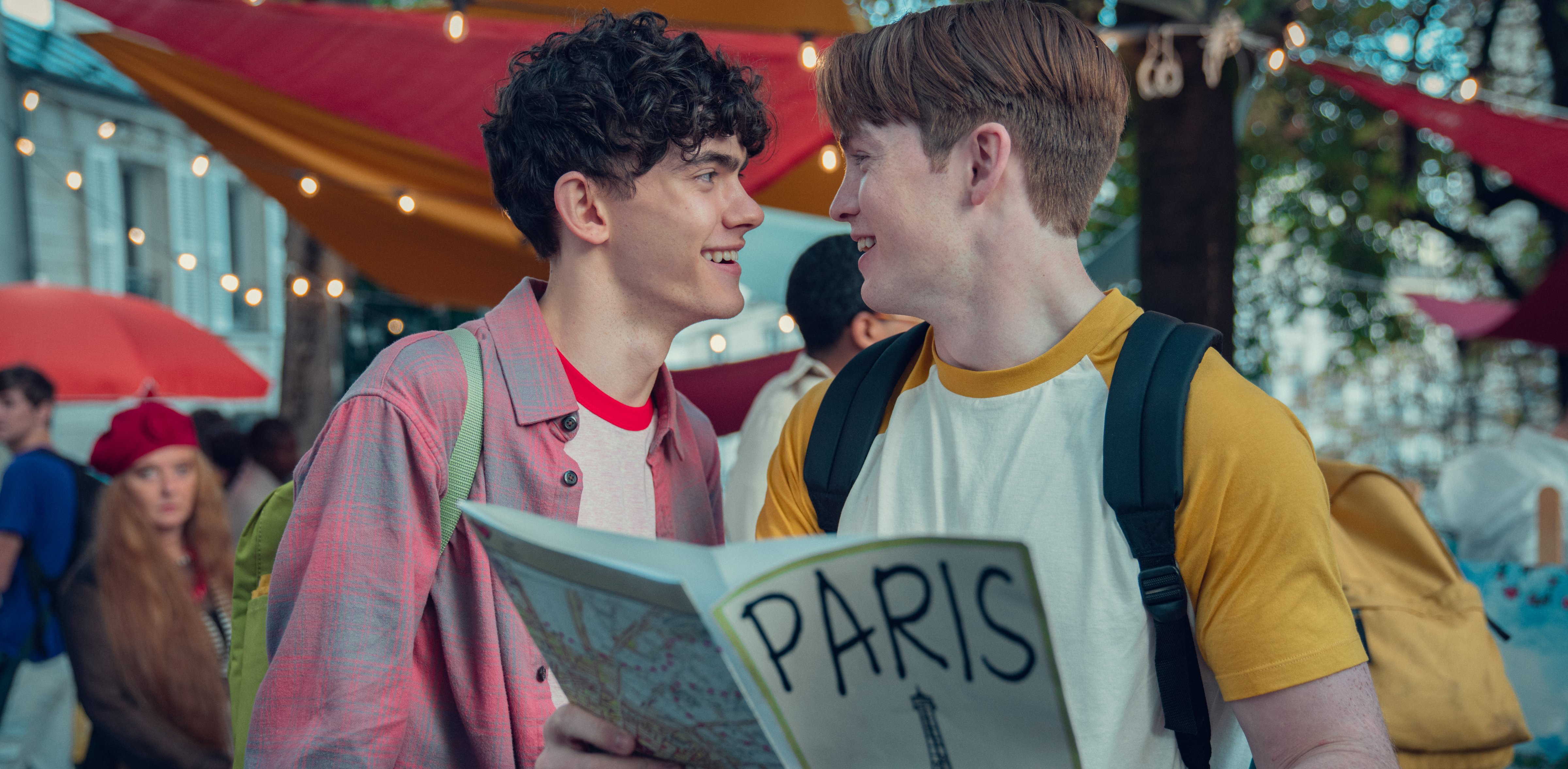
Joe Locke, left, and Kit Connor in Heartstopper
Teddy Cavendish—Netflix
Mental health is central to the wholesome romance’s fantasy of safety, as manifested in relationships built on emotional intimacy. Like Charlie, who once faced bullying after being outed, many of the protagonists in this otherwise cheery subgenre have trauma in their past. This is where these stories overlap with Hoover’s wildly popular, darker romances. In her biggest hit, It Ends With Us, flower-shop owner Lily meets irresistible lothario Ryle hours after her abusive father’s funeral. But when Ryle becomes violent, she finds the courage to leave. Instead of eroticizing abuse, as early bodice rippers did, Hoover’s novel (soon to be a movie starring Blake Lively and Justin Baldoni) is built around the dream of breaking a destructive cycle, even if its compassionate portrait of Ryle can come worryingly close to justifying his behavior.
Hoover notwithstanding, many of these romance narratives also diverge from the straightness and whiteness that have suffused the vast majority of mega-mainstream romances in the past. In the wholesome romance, love isn’t just a refuge from old trauma or contemporary cataclysms. It’s also a safe space for characters—and audiences—who regularly experience sexism or racism or homophobia. Published midway through Trump’s term, Red, White & Royal Blue projects that same sense of security into the political sphere, imagining a Democratic female President (along with a Black, female British Prime Minister) who loves her queer son.
In many ways, the wholesome romance is an encouraging trend. And I can personally attest to its comforts. But I’m not convinced it says anything positive about the state of the world. Escapism is not meant to be rational; on the contrary, it’s a means of imagining the impossible. It’s no coincidence that 50 years ago, the powerful gains of the women’s movement—culminating in Roe vs. Wade—coexisted with romances that often placed female characters in positions of powerlessness. What’s taboo becomes titillating. Women who devoured the violent “rape sagas” of the ’70s were not lining up to be sexually assaulted. Twilight fans did not actually want to have their bodies ripped asunder by a super-strong fetus with a vampire for a father.
The great recycling center that is American pop culture in the 21st century has, inevitably, endeavored to bring back the steamy, scary, kinky entertainment of generations past. Yet erotic-thriller auteur Adrian Lyne’s 2022 comeback, Deep Water, was unintentionally funny more than exhilarating; Paramount+’s attempt to reimagine Lyne’s Fatal Attraction fell disastrously flat. On the heels of five years’ worth of #MeToo revelations, Hollywood’s conflation of love with predation no longer seems so exotic.
What we want instead are gentler, less stressful romances. And the more popular they become, the more that popularity looks like a red flag for society at large and female audiences in particular. Why would anyone need to escape into a story where lifestyles are comfortable, relationships are respectful, women are financially independent, and mental health is paramount if that was already their reality—or even an achievable goal? It isn’t such a wholesome thought.
More Must-Reads From TIME

